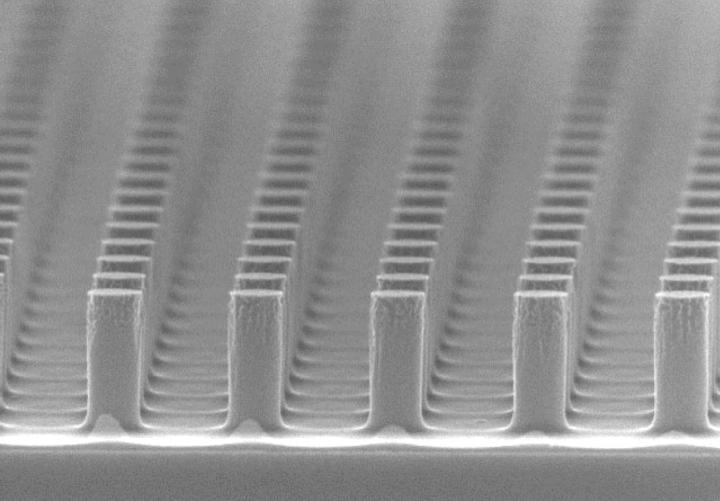Jan 19 2017
 A Kyoto University and Osaka Gas silicon device could double the energy conversion rate of solar cells. Each vertical rod measures about 500 nm in height. (CREDIT - Kyoto University/Noda Lab)
A Kyoto University and Osaka Gas silicon device could double the energy conversion rate of solar cells. Each vertical rod measures about 500 nm in height. (CREDIT - Kyoto University/Noda Lab)
Light can be converted into electricity using solar cells. While the sun is a major source of light, the burning of natural resources such as natural gas and oil can also be harnessed.
However, the issue is that solar cells do not equally convert all light to power. This has led to a collaborative industry-academia effort to formulate a potentially revolutionary solution.
Current solar cells are not good at converting visible light to electrical power. The best efficiency is only around 20%.
Takashi Asano, Kyoto University
Higher temperatures produce light at shorter wavelengths. This explains why the flame of a gas burner turns from red to blue as the heat increases. The higher heat produces more energy, making short wavelengths a crucial objective in the construction of solar cells.
The problem, is that heat dissipates light of all wavelengths, but a solar cell will only work in a narrow range. To solve this, we built a new nano-sized semiconductor that narrows the wavelength bandwidth to concentrate the energy.
Takashi Asano, Kyoto University
Earlier, Asano and colleagues from the Susumu Noda lab had chosen a different method. "Our first device worked at high wavelengths, but to narrow output for visible light required a new strategy, which is why we shifted to intrinsic silicon in this current collaboration with Osaka Gas," says Asano.
A temperature of 1000°C is required to produce visible wavelengths, and conveniently silicon has a melting temperature of more than 1400°C. The researchers etched silicon plates to contain numerous identical and equidistantly-spaced rods. The height, radii, and spacing of these rods were optimized for the target bandwidth.
According to Asano, "the cylinders determined the emissivity," illustrating the wavelengths produced by the heated device.
With this material, the team was able to prove that their nanoscale semiconductor increases the energy conversion rate of solar cells to at least 40%. Their efforts have been reported in Science Advances.
Our technology has two important benefits. First is energy efficiency: we can convert heat into electricity much more efficiently than before. Secondly is design. We can now create much smaller and more robust transducers, which will be beneficial in a wide range of applications.
Susumu Noda, Kyoto University